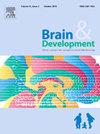Duchenne muscular dystrophy: Evolving therapeutic strategies and multidimensional evaluation approaches
IF 1.3
4区 医学
Q4 CLINICAL NEUROLOGY
引用次数: 0
Abstract
Duchenne muscular dystrophy (DMD) is a severe X-linked muscular disorder caused by the absence of dystrophin. Standard therapies prolong survival; however, there is an increasing need for disease-modifying approaches and sensitive evaluation tools. This review presents a summary of the recent advances in DMD therapeutic strategies and multidimensional evaluation approaches, emphasizing their clinical applicability and future perspectives. In this study, a comprehensive review of the current literature was conducted focusing on mutation-specific therapies (exon skipping and gene therapy), non-mutation-specific pharmacological interventions (steroids, vamorolone, and histone deacetylase inhibitors), and emerging modalities such as cell-based therapy. The clinical outcome measures used across the disease stages were also examined, ranging from functional motor tests and imaging biomarkers to digital endpoints and quality of life (QOL) indices. Exon skipping and microdystrophin gene therapies have shown promising results in restoring partial dystrophin expression. Vamorolones and givinostat are alternative drugs with improved safety profiles. Time-based motor tests (such as time to sand, 10 m run) and digital biomarkers (Stride Velocity 95th Centile) enable the earlier detection of disease progression. Natural history data, including large registry-based datasets, enhance the interpretation of clinical trials. Patient-reported outcomes and disease-specific QOL measures, such as the DMD-QoL, are increasingly being incorporated to assess meaningful treatment benefits. The therapeutic landscape of DMD is evolving toward combination and personalized approaches. Multidimensional stage-specific evaluations are essential to capture functional changes and their therapeutic effects. Ongoing research on gene-, pharmacological-, and cell-based therapies, coupled with robust outcome assessments, may further improve patient care and QOL.
杜氏肌营养不良:不断发展的治疗策略和多维评估方法
杜氏肌营养不良症(DMD)是一种由肌营养不良蛋白缺乏引起的严重的x连锁肌肉疾病。标准疗法延长生存期;然而,人们越来越需要改善疾病的方法和敏感的评估工具。本文综述了DMD治疗策略和多维评估方法的最新进展,强调了它们的临床适用性和未来展望。在这项研究中,对目前的文献进行了全面的回顾,重点是突变特异性治疗(外显子跳跃和基因治疗),非突变特异性药物干预(类固醇,vamorolone和组蛋白去乙酰化酶抑制剂),以及新兴的方式,如细胞治疗。还检查了跨疾病阶段使用的临床结果测量,从功能运动测试和成像生物标志物到数字终点和生活质量(QOL)指数。外显子跳跃和微肌营养不良蛋白基因治疗在恢复部分肌营养不良蛋白表达方面显示出有希望的结果。Vamorolones和givinostat是安全性更高的替代药物。基于时间的运动测试(如到沙地的时间、10米跑步)和数字生物标志物(步频95百分位)能够更早地发现疾病进展。自然历史数据,包括基于大型注册表的数据集,增强了对临床试验的解释。患者报告的结果和疾病特异性生活质量测量,如DMD-QoL,越来越多地被纳入评估有意义的治疗效果。DMD的治疗前景正在向联合和个性化的方法发展。多维阶段特异性评估对于捕捉功能变化及其治疗效果至关重要。正在进行的基因、药物和细胞治疗的研究,加上可靠的结果评估,可能会进一步改善患者的护理和生活质量。
本文章由计算机程序翻译,如有差异,请以英文原文为准。
求助全文
约1分钟内获得全文
求助全文
来源期刊

Brain & Development
医学-临床神经学
CiteScore
3.60
自引率
0.00%
发文量
153
审稿时长
50 days
期刊介绍:
Brain and Development (ISSN 0387-7604) is the Official Journal of the Japanese Society of Child Neurology, and is aimed to promote clinical child neurology and developmental neuroscience.
The journal is devoted to publishing Review Articles, Full Length Original Papers, Case Reports and Letters to the Editor in the field of Child Neurology and related sciences. Proceedings of meetings, and professional announcements will be published at the Editor''s discretion. Letters concerning articles published in Brain and Development and other relevant issues are also welcome.
 求助内容:
求助内容: 应助结果提醒方式:
应助结果提醒方式:


